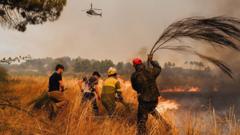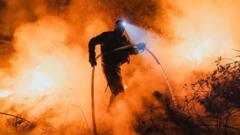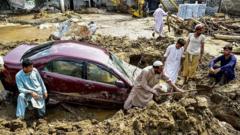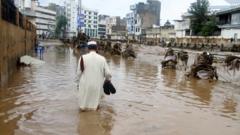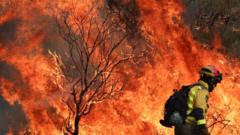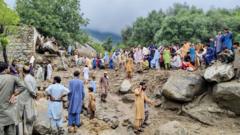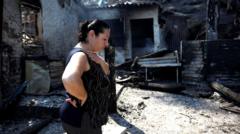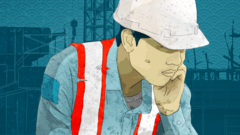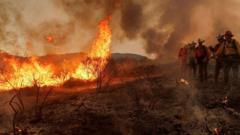The report marks the first significant warning from the WHO regarding heat stress at work since 1969, highlighting the increasing vulnerability of workers worldwide to adverse health effects from rising temperatures.
**WHO Sounds Alarm on Workplace Heat Stress Amid Climate Crisis**
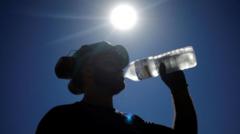
**WHO Sounds Alarm on Workplace Heat Stress Amid Climate Crisis**
The World Health Organization emphasizes urgent need for heat safety measures for workers as climate change accelerates extreme heat waves.
Workers globally are facing heightened risks due to extreme heat, according to a new report by the World Health Organization (WHO) and the World Meteorological Organization (WMO). The analysis reveals that climate change is intensifying the frequency of heatwaves, leaving millions exposed to severe heat stress that jeopardizes both their health and work performance.
Rüdiger Krech, the WHO's director of environment, climate and health, insists that these findings serve as a crucial wake-up call. "It's not merely discomfort; it poses real health risks," he emphasized in a statement to the media. This is the first report released by the WHO that specifically addresses workplace heat stress since 1969.
The data indicates that extreme heat can elevate body temperatures to dangerous levels. Prolonged exposure can lead to conditions such as heatstroke, dehydration, and kidney failure. The last decade has recorded unprecedented high temperatures, with projections indicating that 2024 may set a new record for warmth. For instance, temperatures in certain parts of Europe have surpassed 40°C (104°F), and regions in Africa and the Middle East have experienced alarming highs of approximately 50°C. The WHO's research also connects increased temperatures to decreased productivity; productivity sinks by 2% for every degree rise above 20°C.
Additionally, workplace accidents spike during heatwaves. The Swiss national accident insurance fund reported that, during the 2023 heatwave, incidents rose by 7% when temperatures exceeded 30°C, attributed to impaired focus and increased fatigue among workers.
Recognizing the urgent need for measures, some European nations have begun implementing strategies to safeguard workers. In Italy, the government enacted emergency protocols to halt work during peak heat hours. Similarly, Switzerland paused construction in certain regions during extreme heat, emphasizing the necessity for building firms to prioritize worker safety over tight schedules.
The WHO report also underlines that vulnerable populations, including the elderly and children, face significant health risks in extreme heat, signaling required adjustments in both schools and workplaces. In Germany, schools can declare "Hitzefrei" under high heat conditions, but rising temperatures make frequent interruptions increasingly common and potentially disruptive.
Krech underscores that proactive adaptations must involve collaboration among governments, employers, local councils, and health authorities. Simple changes, such as considering appropriate school uniforms for heat, are already in discussion. However, he warns that necessary adaptations will require financial investment, which may be deprioritized as many governments shift their focus to defense spending post-pandemic.
Ignoring the need for adaptations could lead to costly ramifications for productivity and health, Krech cautioned. The growing evidence underscores that neglecting these issues could ultimately be the most expensive choice of all, both in economic terms and for the well-being of workers and students alike.

